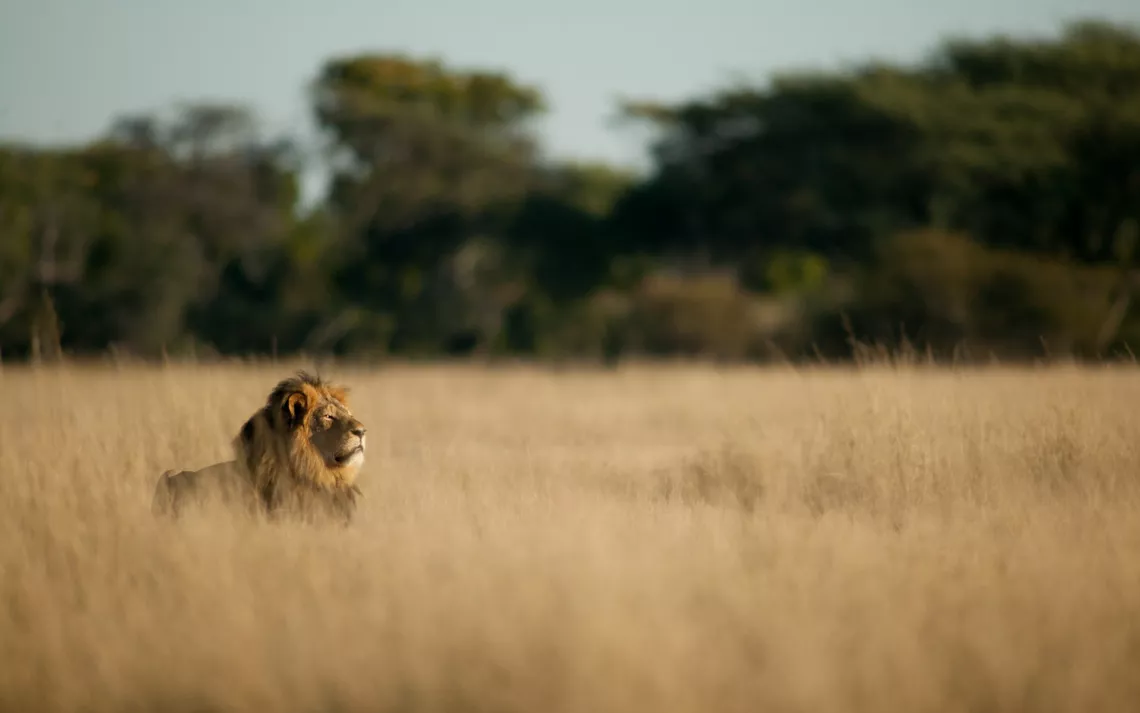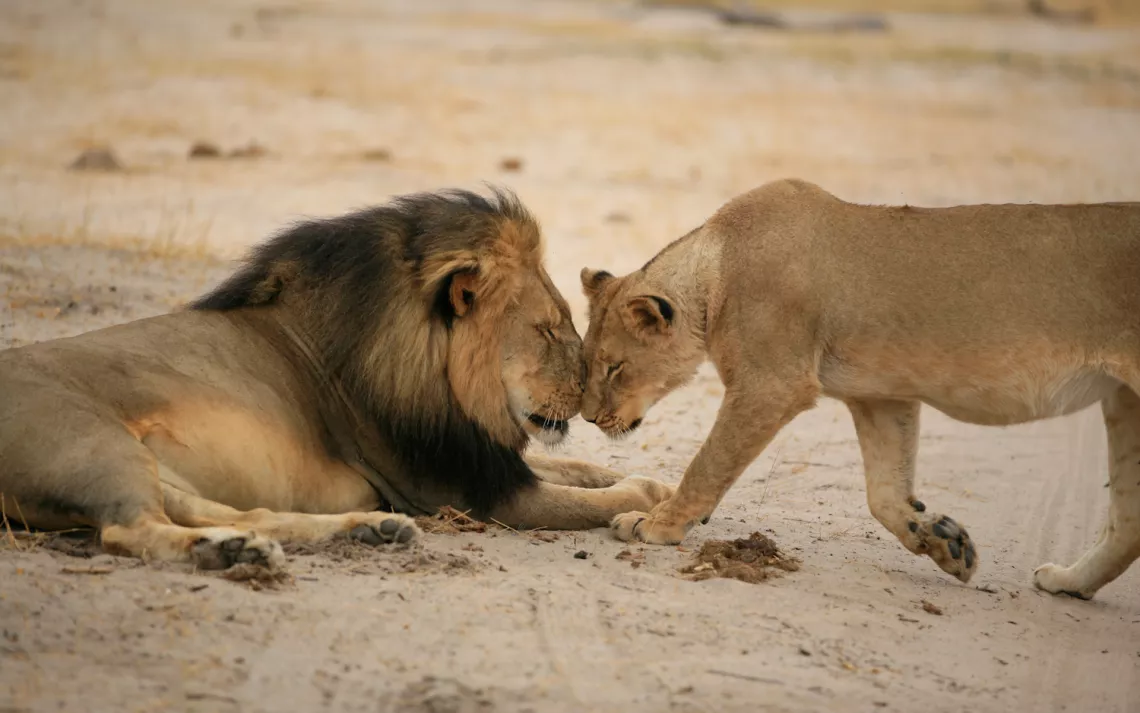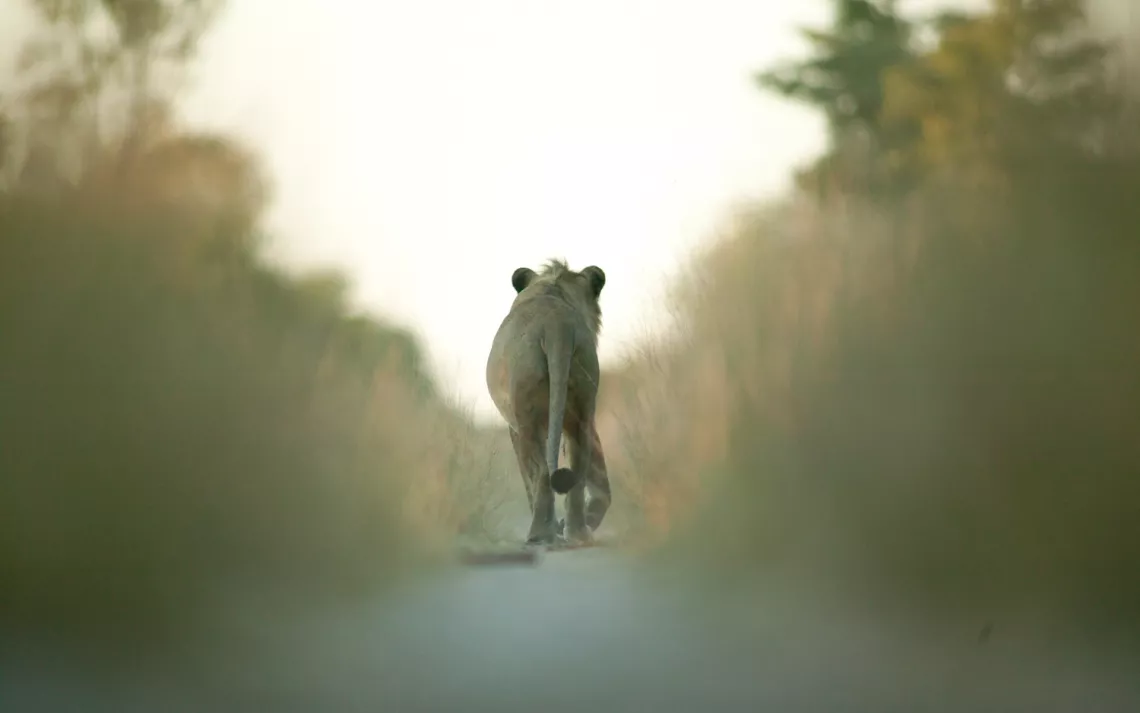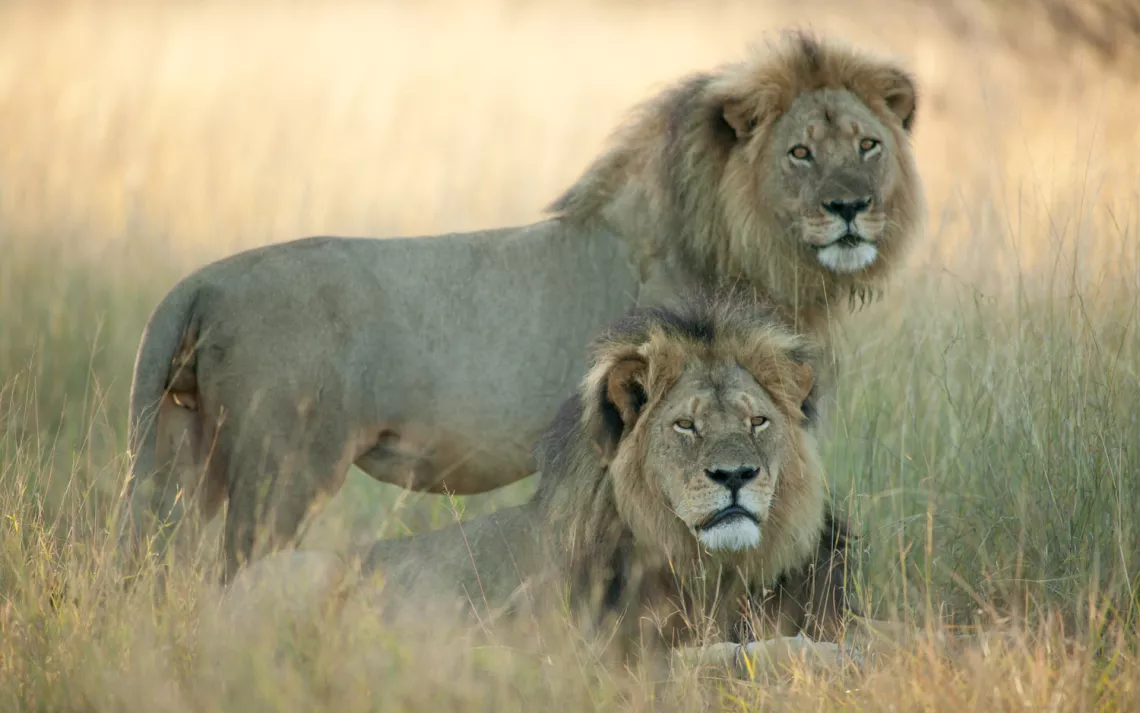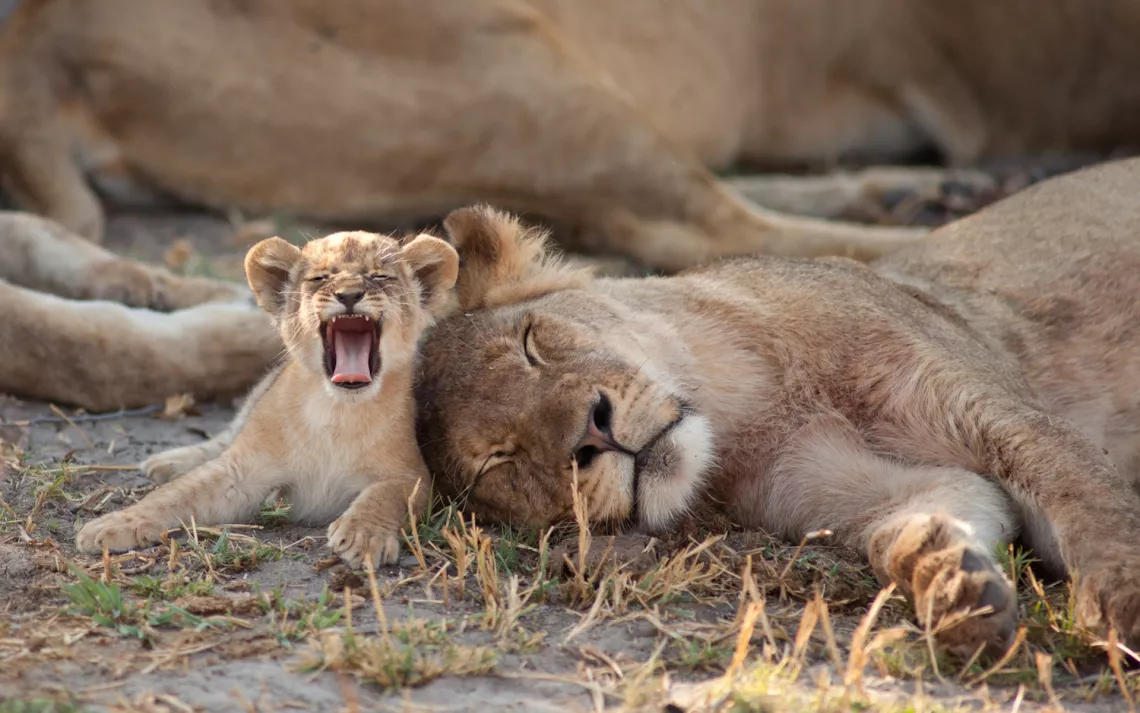The Lion and His Vuvuzela
For the past decade, lion conservationist and wildlife photographer Brent Stapelkamp, 38, had been quietly tracking and researching lions in Zimbabwe’s largest game reserve—Hwange National Park—for Oxford University’s Wildlife and Conservation Research Unit (WildCRU). The work was rewarding. The lion community was healthy and growing.
Then came July 2015.
An American dentist shot and killed one of Stapelkamp’s collared charges, a magnificent 13-year-old black-mane lion named Cecil. In an instant, Stapelkamp found himself at the center of a global scandal. He spoke to reporters; he appeared on TV. In many respects, he became the voice of the assassinated lion.
Nearly a year has passed since the tragedy, and Stapelkamp is still speaking out, still working tirelessly on behalf of African lions. Recently, the lanky, bearded, soft-spoken Zimbabwean was in New York for a series of events that included a gallery exhibition of his evocative photos of Cecil and other lions; the publication of a new children’s book, Cecil’s Pride: The True Story of a Lion King, illustrated with Stapelkamp’s stunning photography; and the acceptance of a prestigious Tribeca Disruptive Innovation Award.
He also delivered two presentations on his work’s primary focus: finding ways for lions and the cattle-farming communities that fringe Hwange’s fenceless boundaries to sustainably coexist.
About the size of Connecticut, Hwange represents a critical piece of the massive Kavango-Zambezi Transfrontier Conservation Area (KAZA-TFCA), a collaborative initiative among five neighboring southern African countries, projected to be the largest protected landscape in the world.
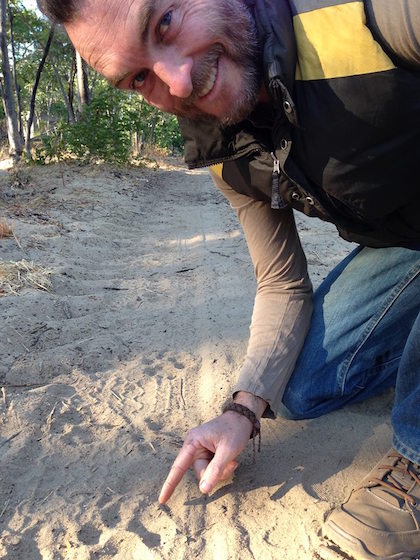
Photo courtesy of Oliver Stapelkamp
“We used to think these were Hwange lions,” Stapelkamp says. “Now we realize they are regional lions. That’s a very profound message for us, because this is where lion conservation is going.”
Transcending political boundaries and geographic borders, the governments of Zimbabwe, Zambia, Botswana, Angola, and Namibia have been working together to safeguard a habitat the size of Italy before human encroachment makes such measures impossible. It’s a massive and wonderful project that links ancient animal migration routes, promising to extend the range of lions, along with other species, and help redistribute their population in a way that will contribute to their long-term survival.
A self-described “elephant-dung-in-my-shoes type of field researcher,” Stapelkamp gave lectures at the Explorer’s Club and Hemingway African Gallery curiously titled “Cats and the Art of the Vuvuzela.” Vuvu-what? The vuvuzela, you may recall, is the noisy, plastic horn made famous during the 2010 World Cup in South Africa.
“It makes the worst noise on the planet,” he jokes. And then, in all seriousness, he adds, “We use it to chase lions,” referring to a project he helped kickstart in 2012: the Long Shield Lion Guardians.
If KAZA signifies the future for large-scale, international conservation, Long Shields represents the immediate, grassroots face of local conservation. According to Stapelkamp, conflict with people “leads to one of the highest sources of mortality to the lion population.” And that’s precisely what Long Shields is designed to prevent.
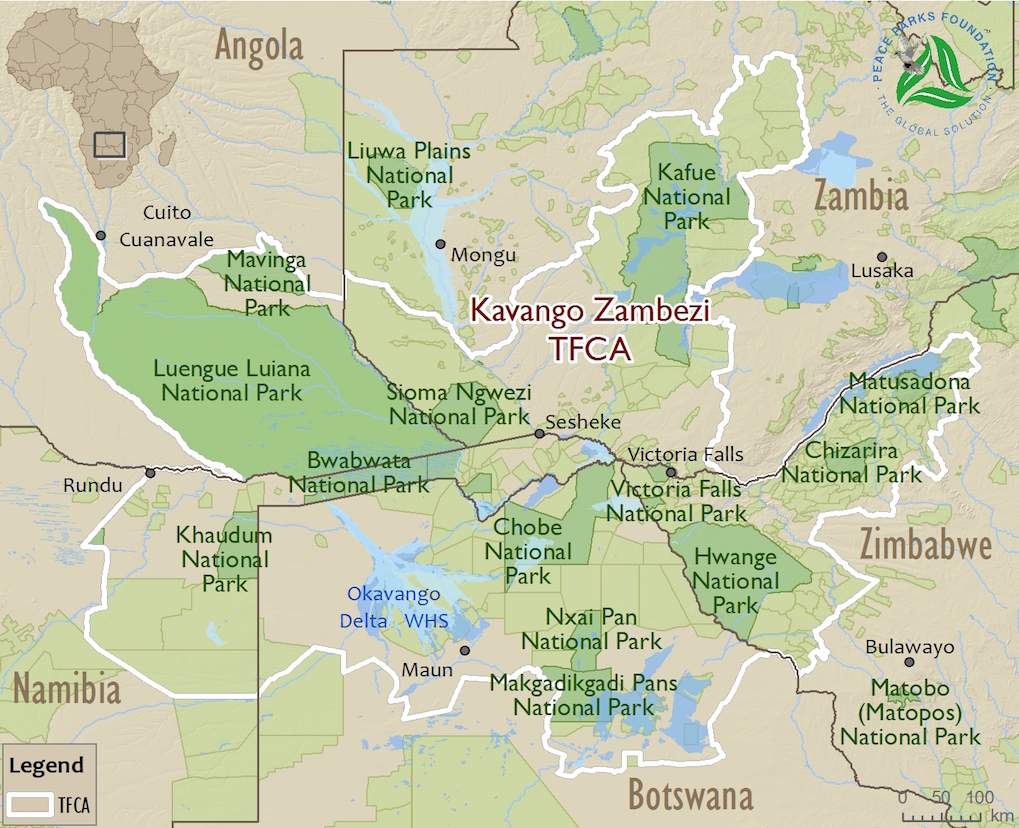
Image courtesy of Peace Parks Foundation
Here are excerpts from Stapelkamp’s two talks:
1.2 million lions roamed throughout Africa in the 1800s. There are now 20,000 left. Loss of habitat is the major cause.
Hwange has healthy lions. There is an abundant source of prey: giraffe, elephant, zebra, buffalo, and wildebeest. Hwange used to be a desert. But in order to stimulate tourism, the park has been pumping water into artificial water holes for 70 years. This has led to an increase in the lion population.
More lions means less territory for the growing population. There’s a lot more interaction, a lot more genetic exchange. But it also means that when a young male lion reaches puberty and he’s chased away by the pride male to avoid inbreeding, he must look for his own territory. The only place he can go where there’s no competition is outside the protected area.
It’s not that the lion prefers cattle or wants to be among people. He’s just young and not experienced enough to fight, so he settles in a place where he doesn’t have to worry about other lions. There’s just a tar road between protection and people. He crosses the road.
My job has been to buy him time, to give him just a little more of a chance so that he reaches maturity, at which time he invariably comes back, strong and experienced, to contribute to the gene pool.
I have a license to dart lions. It’s a great privilege. Once I dart a lion, we’ve got about an hour to put on a collar, attach an ear-tag, and take blood samples and teeth measurements. We photograph its face, measure the front paw, testicle length, and tail girth, and record its unique whisker spot pattern, which is like a fingerprint. It’s a huge data set.
I can remotely control that collar by going onto my cellphone, logging into a website, and programming the collar to give me the number of GPS points I need per day, per hour, to locate the lion. If he’s a troublemaker, his collar takes a point every hour; I’m checking it throughout the day. When I see he’s too close to people, that he’s about to cross the road, I’ll send a WhatsApp message.
This is where the real heroes of the story come in. The men and women are called the Long Shield Lion Guardians. We’ve got 10 of these people employed now. At least eight of them had never seen a lion before we hired them. Now we’re paying them to chase lions with a vuvuzela. You must appreciate how profound a change that is. You can imagine how just the idea itself was met with some reservation. [But] unemployment in Zimbabwe is 80 percent, so when you offer someone a job, they take it.
So I send a WhatsApp message to all the guardians with the GPS location of the lion. I say, “Guys, be careful, a young lion is on his way.” They enter the location on their GPSs and race there on bicycles to get any cattle or goats out of the way. They have their own WhatsApp groups that include shop owners, schools, villagers. They send a message to about 140 people immediately: “There’s a lion coming in from the west, near the big tree”; whatever it might be in local reference.
Schoolkids must walk to school in big groups. They must sing songs and whistle. If you stop a lion, that’s when he’s dangerous. But if he can hear you coming from a distance, he’ll often avoid you. So this is the type of activity we can influence—let people know where the lion is and they can adjust their behavior.
Once we’ve warned the communities there’s a lion around, if it’s crossed their boundary, we can’t expect people to just tolerate that animal. We now need to try getting the lion back in the protected area. That’s where the vuvuzela comes in.
The Long Shields round up some brave neighbors. They fan out in a long line. Their GPS will tell them where the lion is. They test the wind. They have to get the direction right. They don’t want to chase the lion into the village. At the count of three, all hell breaks loose. Everyone blows their vuvuzelas. They light firecrackers, beat drums. At times, the lion charges but is met with people all blowing their vuvuzelas at the same time, not moving, standing their ground. The lion stops short. They’ve called his bluff. He turns and runs away.
We’ve seen 50 percent fewer cattle killed because of this type of work compared with all those years before the guardians.
In addition to the Long Shields project and various school and community-outreach initiatives, Stapelkamp has helped introduce a program that encourages villagers to protect their livestock at night by placing them in large, mobile bomas (corrals).
As the first anniversary of Cecil’s death approaches, his story continues to inspire. Time magazine recently published a list of the 100 most influential animals in the world, and ranked Cecil top among them. The U.S. Fish and Wildlife Service listed lions in Central and West Africa as endangered, and those in southern and East Africa as threatened. France has banned importing lion trophies. Trophies of endangered lions are also prohibited in the United States. And more than 40 airlines now ban wildlife trophy shipments on their carriers. Stapelkamp is leading an initiative to honor Cecil by naming all lions as the first “World Heritage Species.”
According to David Macdonald, director of WildCRU, “Until now, we haven’t had the funds to replicate our Zimbabwean community-based Long Shield livestock-protection program [in] Botswana, a KAZA country. But with the donations in memory of Cecil, we are putting this work in place.”
It’s a legacy worthy of that now-fabled lion, as well as the man who knew him best, Brent Stapelkamp.
 The Magazine of The Sierra Club
The Magazine of The Sierra Club
